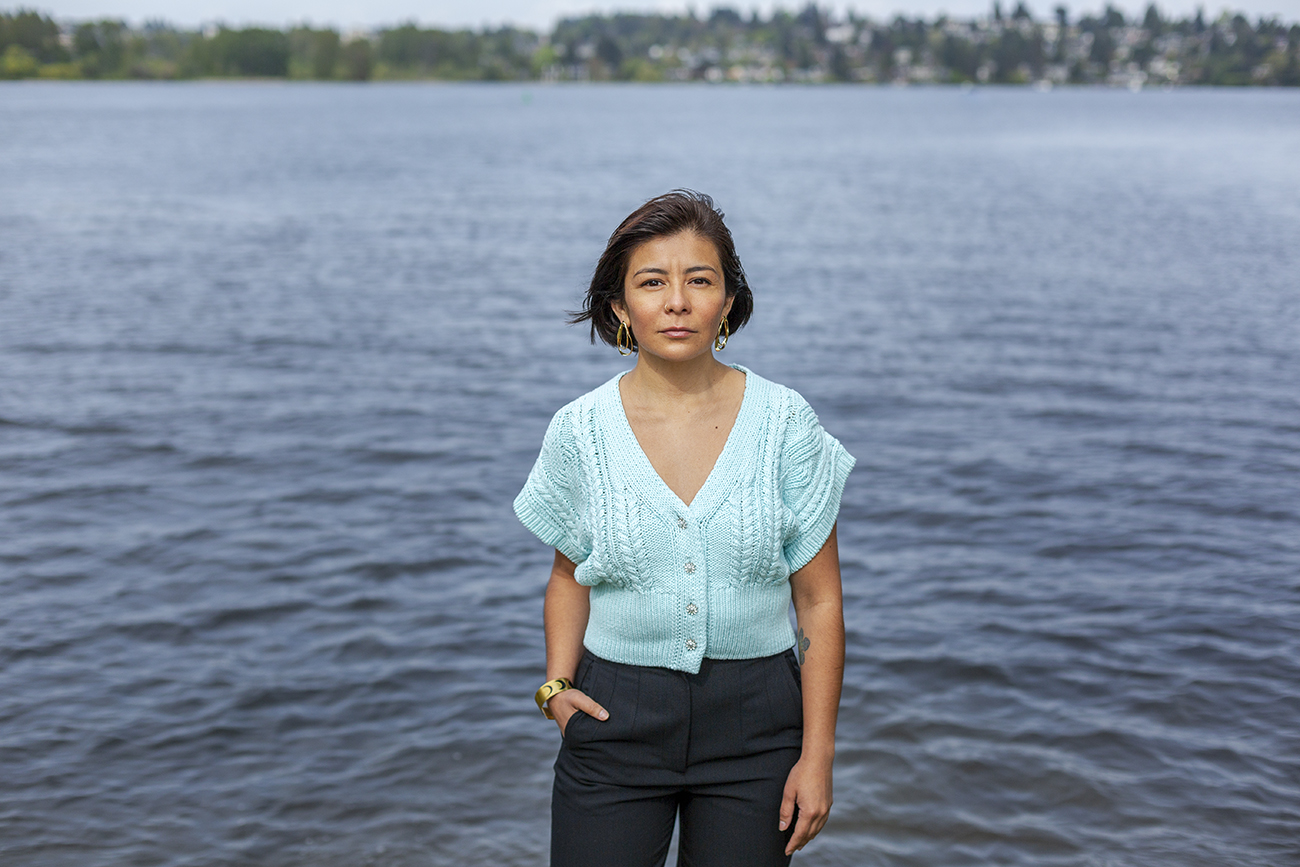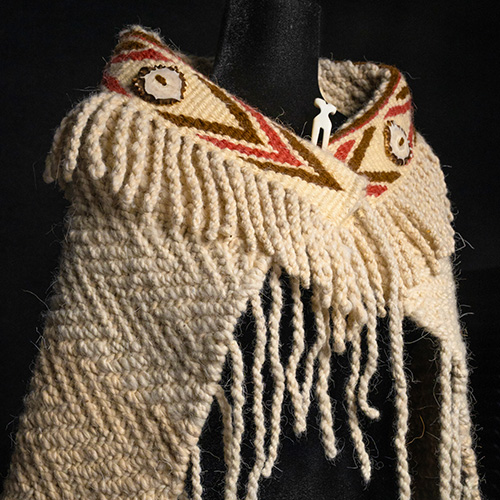
Iris Viveros Avendano had recently moved to Seattle from Mexico when a UW graduate student spotted her performing music and dance from Veracruz, Mexico. That sighting, and the connections it established, would lead Viveros all the way to a UW doctoral degree in gender, women & sexuality studies (GWSS) and a dissertation on fandango, a participatory art form that combines music, poetry, and dance.
The journey required curiosity and determination — and a bit of serendipity.
Growing up, Viveros had limited knowledge of fandango. She spent her early years in Mexico City, where she juggled grade school and street vending with her parents. When she was a teenager, the family moved to Veracruz, the home of Mexican fandango. There she had her first encounter with the art form, which integrates dancers’ steps as percussion.
“We saw fandango a few times and I remember just loving it, but I didn’t participate because I didn’t know how,” Viveros says. “My father, who was from Veracruz, taught me a few steps here and there, but I didn’t grow up with the tradition.”
It was years later, after moving to the US, that Viveros began to participate in fandango. She arrived in Seattle, where her sister lived, with no English language skills. After completing ESL classes, she enrolled at Seattle Central College. Around that time she met a musician interested in music from Veracruz, who asked if she’d consider dancing with his band.
“I told him my dad was from Veracruz and he’d taught me some steps,” Viveros says. “I said I could try. Then I listened to the music — in particular the footwork, and watched YouTube videos to learn what I could. Of course, I wasn’t good,” she laughs.
Partnering with the UW Community
Here’s where serendipity comes in: Martha Gonzalez, then a GWSS PhD student, happened to see Viveros perform. Gonzalez had been to Veracruz to conduct research on community music and fandango, and was keen to develop a campus-community fandango partnership in Seattle. She reached out to Viveros, hoping to connect with community members who might be interested in such a partnership.
Fandango teaches you to listen. To be open. To learn. To be humble. We all need more of that.
Soon Viveros and her friends were visiting the UW campus regularly for fandango workshops through a new program, the Seattle Fandango Project. The weekly workshops, held at the UW’s Ethnic Cultural Center, were open to the public, with Gonzalez and her husband, Quetzal Flores, teaching the music and steps.
“Really they were teaching the importance of building community, the importance of how we treat one another, and the importance of the individual to the larger benefit of the community,” says Viveros.
The experience brought Viveros deeper into the fandango community. It also introduced her to UW faculty and graduate students who would serve as mentors in her educational journey. “They knew my story and knew that I wanted to study, and they helped me navigate how to apply to the UW,” she says.
Viveros was accepted to a UW Evening Degree Program that was available at that time, which allowed her to work full time while earning a bachelor’s degree in social sciences, with a focus on gender, culture, and ethnicity. She also was accepted to the McNair Scholars Program, a federally funded program that encourages students from historically underrepresented groups to pursue a graduate degree.
The Healing Power of the Arts
As an undergraduate, Viveros completed a research project on fandango as a form of healing and resistance for those impacted by gender violence. She later expanded on that research as a graduate student, studying fandango’s role in responding to structural violence and larger questions of collective trauma.
To understand how fandango can play such a role, it helps to understand the art form. Fandango, an Afro Indigenous tradition that dates back to the 1600s, incorporates collective music, poetry, and dance. The dance — percussive footwork — is performed by multiple dancers, mostly womxn, on a wooden platform known as the tarima. Teamwork is essential.

“It’s hard,” Viveros says of the footwork. “It takes time to learn. If people don’t make space for one another, if you don’t teach the other one how to dance, if you start to just dance on your own, it will sound terrible, even when you think you are a good dancer. It is all about making space and listening to the other person and playing together. That’s the philosophy of fandango — you have to make space for community. Every member of the community is important.”
These spaces are powerful for individuals and communities that have survived oppression and historical trauma, Viveros says. Her research — including observation of fandango, collection of oral histories, analysis of scholarship, and testimonials about state violence in both the US and Mexico — confirms the importance of fandango in healing and resistance.
“Fandango teaches you to see yourself as a valuable member of society, as someone who contributes greatly to a community,” says Viveros. “And it does so in a form of joy, in a form of love. When systems tell us that we need to change to fit in, leaving behind some elements of who we are, like our language or our forms of knowing, we have practices like fandango through which we can reclaim those things — not only individually, but as a group.”
The pandemic has put a pause on in-person fandango activities in Seattle, but Viveros encourages anyone interested to join in when restrictions are lifted. The Seattle Fandango Project has moved to El Centro de la Raza; Viveros also recommends Movimiento Afrolatino Seattle. However, she may not be able to participate — she’s currently interviewing for faculty positions in other states. “I’m excited to continue this work,” she says.
What Viveros has learned through fandango is sure to help in her new role.
“Fandango teaches you to listen. To be open. To learn. To be humble.” she says. “We all need more of that.”
More Stories

A Healing Heart Returns
In February, the UW Symphony will perform a symphony that Coast Salish elder Vi Hilbert commissioned years ago to heal the world after the heartbreak of 9/11. The symphony was first performed by the Seattle Symphony in 2006.

Coast Salish Traditions are "Woven in Wool" at the Burke
A Burke Museum exhibit, co-curated by Coast Salish weavers and Burke curators, highlights the importance of weaving to Coast Salish communities.

Capturing the Sounds of Campus
With "University of Washington Soundscape," ethnomusicology and international studies major Leo Freedman has created an audio experience of the UW campus.